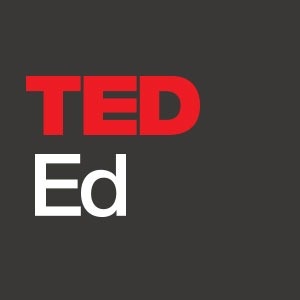2020-09-03
[public] 558K views, 22.2K likes, dislikes audio only
How does a fact become a misconception? Dig into the world of misinformation to see how facts can become distorted and misleading.
--
In 1901, David Hänig published research that led to what we know today as the taste map: an illustration that divides the tongue into four separate areas. It has since been published in textbooks and newspapers. There is just one problem: the map is wrong. So how do misconceptions like this spread, and what makes a fake fact so easy to believe? Joseph Isaac dives into the world of misinformation.
Lesson by Joseph Isaac, directed by CUB Animation.
Animator's website: http://cubanimation.com/en/intro-en/
Sign up for our newsletter: http://bit.ly/TEDEdNewsletter
Support us on Patreon: http://bit.ly/TEDEdPatreon
Follow us on Facebook: http://bit.ly/TEDEdFacebook
Find us on Twitter: http://bit.ly/TEDEdTwitter
Peep us on Instagram: http://bit.ly/TEDEdInstagram
View full lesson: https://ed.ted.com/lessons/why-people-fall-for-misinformation-joseph-isaac
Thank you so much to our patrons for your support! Without you this video would not be possible! Maria Lerchbaumer, Ever Granada, Marin Kovachev, Ravi S. Rāmphal, Penelope Misquitta, Tekin Gültekin, Jhuval, Hans Peng, Gaurav Mathur, Erik Biemans, Tony, Michelle, Katie and Josh Pedretti, Vaibhav Mirjolkar, Thomas Bahrman, Allan Hayes, Aidan Forero, Uday Kishore, Mikhail Shkirev, Devesh Kumar, Sunny Patel, Anuj Tomar, Lowell Fleming, David Petrovič, Hoai Nam Tran, Stina Boberg, Alexandrina Danifeld, Kack-Kyun Kim, Travis Wehrman, haventfiguredout, Caitlin de Falco, Ken, zjweele13, Anna-Pitschna Kunz, Edla Paniguel, Elena Crescia, Thomas Mungavan, Alejandro Cachoua, Jaron Blackburn, Yoga Trapeze Wanderlust, Sandy Nasser, Venkat Venkatakrishnan, Nicolle Fieldsend-Roxborough, John Saveland, Jason Garcia, Robson Martinho, Martin Lau, Senjo Limbu, Joe Huang, SungGyeong Bae, Christian Kurch, Begum Tutuncu.
/youtube/video/sxYrzzy3cq8
/youtube/video/hz6GULbowAk?t=65.658997
/youtube/video/hz6GULbowAk?t=241.34
/youtube/video/hz6GULbowAk?t=299.5
/youtube/video/sxYrzzy3cq8
/youtube/video/8HLtFv_KqoE
/youtube/channel/UCsooa4yRKGN_zEE8iknghZA

